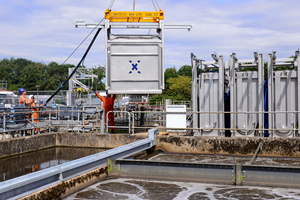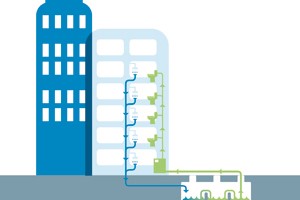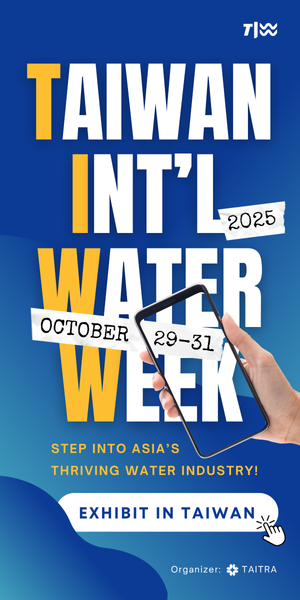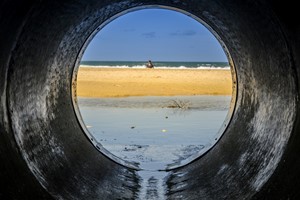As the UK water sector contends with mounting challenges—ranging from climate change and emissions to population growth and pollution—innovation has become the cornerstone of a transformative strategy. From cutting-edge technologies like in-sewer “pipebots” and AI-driven pollution tracking, to open data platforms and net zero hubs, a new era of collaboration is taking shape. And at the heart of this transformation is Ofwat’s Innovation Fund, now extended through 2030.
A Nationally Critical System Under Pressure
With over 15 billion litres of drinking water treated daily and 11 billion litres of wastewater processed, the UK’s water system is one of the most complex infrastructures in the country. Every day, the system serves more than 26 million homes and businesses across England and Wales, all connected by hundreds of thousands of kilometres of water and wastewater pipelines.
Yet, such an expansive and aging network is not without its issues. Some problems—like sewage overflows into rivers and seas—regularly make headlines. Others, such as greenhouse gas emissions, agricultural runoff, and the pressing need for circularity in wastewater treatment, are less visible but just as urgent.
There is no quick fix for these multifaceted issues. Instead, solving them requires a systemic shift: a new approach that blends innovation, collaboration, and scalable infrastructure.
The Ofwat Innovation Fund: A Catalyst for Change
In response to these mounting pressures, Ofwat launched its Innovation Fund in 2020. Initially set at £200 million, the fund was designed to expand the capacity of the water sector to innovate. Its early success in fostering collaborative, cross-sector projects led to an additional £400 million being committed through 2030.
To date, over 90 projects have been funded across initiatives like the Water Breakthrough Challenges and the Water Discovery Challenge, the latter of which enabled new entrants into the sector without requiring a partnership with an existing water company.
These projects are as varied as they are groundbreaking. From gamified tools encouraging consumers to save water, to advanced solutions for removing harmful PFAS chemicals from wastewater, the focus has been on bold experimentation. Projects like Spring—a national innovation centre for water sector collaboration—also ensure that learnings and technologies are shared widely across the industry.
However, Jo Jolly, Director of Environment and Innovation at Ofwat, underscores an important point: the real challenge lies not just in innovation itself, but in turning those innovations into scalable, real-world solutions. That’s where the sector's focus is shifting now.
Laying the Groundwork: Innovations that Enable Innovation
To support the move from idea to implementation, the water sector is developing enabling infrastructure. Three landmark projects stand out: Stream, the National Leakage Research and Test Centre (NLRTC), and the Net Zero Hub. Each not only delivers practical outcomes but also creates a springboard for future advancements.
Stream: Making Data Accessible, Transparent and Usable
Data is the backbone of effective innovation—and for too long, the water sector’s data has been siloed and inconsistent. Stream, a collaborative initiative involving 16 of the UK’s 18 major water companies along with partners such as the Open Data Institute and Icebreaker One, is changing that.
The goal of Stream is to standardize and open up water-related data, making it freely accessible to innovators, researchers, and the public. One of its key achievements so far is the National Storm Overflow Hub. This platform, launched by Water UK, provides real-time access to data from every storm overflow site in England and Wales, making it the most advanced overflow monitoring system in the world.
This open access to consistent, high-quality data enables powerful downstream innovation. Take HR Wallingford’s AI platform, Sapphire, for example. A finalist in the Department for Science, Innovation and Technology’s Manchester Prize, Sapphire uses Stream data to better predict and manage water pollution. The system integrates various pollution sources and generates actionable insights far more efficiently than traditional methods, helping utilities prevent sewer overflows and protect water quality.
Stream exemplifies the concept of “innovation enabling innovation.” It doesn’t just solve one problem; it builds the infrastructure for solving many.
NLRTC: Simulating Real Conditions to Test Anti-Leakage Tech
Water leakage remains a significant issue despite ongoing efforts—around 20% of drinking water is still lost through leaks. Traditional detection methods, such as acoustic listening, can only do so much, particularly in old or noisy environments.
Enter the National Leakage Research and Test Centre (NLRTC). Spearheaded by Northumbrian Water in partnership with 13 water companies and academic institutions like the universities of Sheffield and Southampton, the NLRTC will provide a controlled, simulated water network environment. This means new technologies—like smart sensors that might feed real-time data into the Stream platform—can be tested without risking live infrastructure or water quality.
Critically, this centre addresses one of the key barriers to adoption: proving that new technologies are safe, effective, and ready to scale. By rigorously vetting solutions in a near-real-world environment, the NLRTC will shorten the time between invention and national deployment.
Net Zero Hub: Decarbonizing the Water Sector
Often overlooked in discussions around emissions, the water sector is a significant contributor—responsible for roughly one-third of the UK’s industrial greenhouse gas emissions and consuming about 3% of the nation’s electricity.
To address this, Severn Trent Water, along with nine other water companies and partners including Siemens, Aston University, and AtkinsRealis, has developed the Net Zero Hub. This retrofitted wastewater treatment facility is a living test bed for low-emission technologies.
Among its notable achievements is Actilayer, a tank cover that converts nitrous oxide—a potent greenhouse gas—into harmless nitrogen and oxygen. Another innovation being trialled is the recovery of cellulose from sewage. Once extracted, this can be repurposed as a sustainable construction material—an example of how circular economy principles are being applied in water management.
Like Stream and the NLRTC, the Net Zero Hub functions as a multiplier. It provides the infrastructure for testing and deploying emission-reducing technologies that could benefit not only the water sector, but also construction, energy, and other industries.
Toward a Scalable, Sustainable Future
What’s emerging is a powerful ecosystem. These innovations—Stream, the NLRTC, and the Net Zero Hub—are increasingly integrated. The NLRTC can test leak detection technologies that feed into Stream’s open data platform. Innovations built on Stream data can be trialled at the Net Zero Hub. And as these facilities share findings, they raise the entire sector’s capacity to act.
This model—innovation that breeds further innovation—is what Jo Jolly calls the “rising tide that lifts all boats.” It’s a strategy rooted not just in invention but in scale, collaboration, and transparency. Importantly, it also builds public trust by opening up the inner workings of the water system to scrutiny and participation.
Looking ahead, the next phase of the Ofwat Innovation Fund will focus on implementation and impact. The aim is not just to support bright ideas, but to make sure they reach the people and places that need them—driving improvements in resilience, environmental protection, and service quality.
Conclusion: Turning Potential into Progress
The transformation of the UK’s water system is well underway, driven by a blend of forward-thinking regulation, technological breakthroughs, and a collaborative spirit. While there’s still much to do—especially around scaling innovations and overcoming entrenched system inefficiencies—the foundation is strong.
The innovations highlighted here are more than isolated successes. They represent a shift in how the UK approaches its water infrastructure: from reactive to proactive, from siloed to integrated, and from closed to transparent. With the right support and continued collaboration, the sector is poised not just to meet today’s challenges—but to anticipate and address those of tomorrow.













